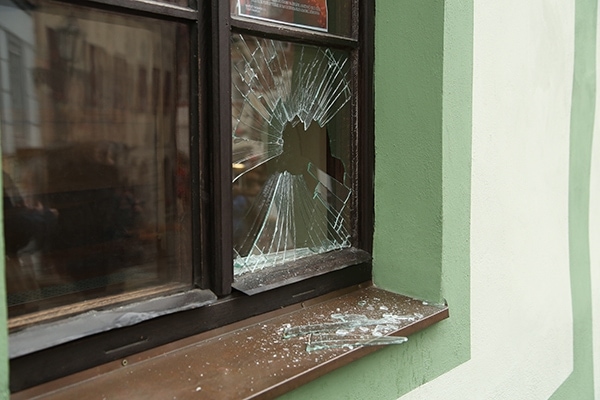
As an architect, efficiency and clear communication with other project stakeholders are crucial when it comes to timely completion of projects and more importantly, the overall happiness of your client. With that being said, the accuracy of both specifications and installations are of the utmost importance to ensure that projects progress as planned. Architects are all too familiar with the amount of work and precision that go into writing specifications so that the technical information and installation procedures are defined clearly for contractors. In the event that a mistake is made in the installation process, the time and effort spent writing specifications is ultimately wasted, and you’re forced back to square one. Not only does this waste time, but it can also be costly to fix.
Table of Contents
Mistakes Come at a Cost
Unfortunately, even with accurate specifications and straightforward communication, mistakes can occur. For instance, you may specify the use of a particular type of glass for the windows, such as Low-E or tempered glass. If the glass company mistakenly installs regular glass, the windows in the space won’t offer the benefits you originally intended in your specifications. Not only are you out many hours of work, but you are also forced to re-do specifications and eventually re-do the window to meet the initial requirements. Furthermore, a mistake can ultimately impact the project deadline, potentially resulting in a dissatisfied client. Sometimes the remedy must be implemented quickly so the building owner can obtain their Use and Occupancy Permit without delay. In the event that a mistake is made, you need a fast, cost-effective solution. Save yourself both time and money with window film.
How Window Film Can Help Correct the Glazier’s Mistake
When miscommunication occurs or a mistake is made, a quick turnaround is required to solve the issue so that the project moves forward in a timely fashion and the client remains satisfied. In the event that the type of glass you specified is not installed and you need an optimal solution, there are a variety of window films that can address the requirements of your project. Don’t rewrite your specifications or re-install new glass. Discover the window film solution that can be utilized for the specific needs of your space.

Which Window Film Product is Right for Your Space?
Safety and Security Window Film
Tempered glass can be used to increase the level of safety in a space because, when shattered, the glass breaks into cubic pieces rather than sharp shards. However, in the event that the glass company overlooks this detail and installs regular glass, your client’s space may not meet the required building regulations mandated by the local municipality. As a result, they may be unable to receive their Use and Occupancy Permit. You may think your only option is to have the regular glass replaced with tempered glass, costing you both time and money. However, safety and security window film can be added to glass to enhance the safety of a space at a fraction of the cost.
While many don’t consider installing such a film until an issue arises, it’s beneficial to prepare buildings for unexpected events such as break-ins, natural disasters, or bomb blasts. 3M Safety and Security Window Film is designed to hold the glass fragments in place in the event that it’s broken, protecting both property and people inside of a space. It’s important to note that this benefit goes above and beyond the safety capabilities of tempered glass. Although broken tempered glass is less likely to cause injury than fractured traditional glass because it breaks into cubes rather than shards, it does not prevent an intruder from gaining entry. With safety and security window film, you can achieve the benefits of tempered glass when regular glass is mistakenly installed, buying you time and saving you money.
Insulating Window Film
Low-E glass windows are utilized to reject the sun’s infrared heat and retain man-made heat, resulting in comfortable temperatures, lower energy consumption, and fade protection. However, in the event that a glass company overlooks this specification and your client’s building is fitted with regular glass, how can you ensure that your client will reap the benefits of Low-E glass without having to replace the windows?
Instead of replacing the regular glass with Low-E glass, consider utilizing insulating window film to achieve the same benefits at a lower cost and in a timely fashion. 3M Insulating Window Film allows light to enter a space, without negative side effects such as damage from UV rays, bothersome eye strain, and uncomfortable temperatures. Inadequate insulation can cause HVAC systems to work hard to maintain comfortable temperatures, driving up energy bills. However, with insulating window film, the insulation of a building is drastically improved, adding years onto the life of HVAC systems, lowering energy consumption, and allowing for comfortable temperatures no matter the season. Insulating window film is a cost-effective alternative to Low-E glass and can result in increased occupant comfort, lower energy bills, and glare reduction.
When it comes to construction projects, mistakes are inevitable. However, it is how you address these mistakes that makes a world of a difference. Instead of rewriting, restarting, or replacing, wasting both time and money, utilize 3M window film for an efficient and cost-effective fix.

Energy Products Distribution is a Master Distributor of 3M Window Films, 3M Paint Protection Films, 3M Wrap Film Series 2080, 3M Protection Wrap Films, 3M Architectural Finishes, 3M Ceramic Coatings, and Windshield Skin. We sell our products to professional installers throughout the US who provide turnkey installations (labor and material) to end-users in the automotive, commercial, government, and residential markets. Contact us to learn more about the benefits of these products.









